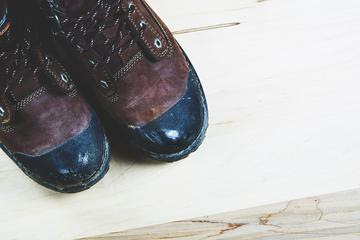Stepping into Safety: The Essential Guide to Basic Safety Shoes
In the bustling world of industries and construction sites, where heavy machinery hums and hazards lurk around every corner, one piece of equipment stands as a crucial line of defense: safety shoes. These unassuming yet indispensable guardians of our feet ensure that workers can navigate their work environments with confidence and security. In this guide, we delve into the world of basic safety shoes, exploring their importance, features, and how they contribute to a safer workplace.
Why Basic Safety Shoes Matter
Before delving into the specifics
of basic safety shoes, it's important to understand why they are such an
integral part of workplace safety. Every year, countless workers suffer from
foot injuries ranging from minor cuts and bruises to more severe incidents like
fractures or amputations. Many of these injuries could have been prevented or
mitigated by wearing appropriate safety footwear.
Basic safety shoes serve as a
protective barrier between the wearer's feet and the hazards present in their
work environment. Whether it's falling objects, sharp debris, electrical
currents, or slippery surfaces, these shoes are designed to withstand a variety
of dangers while providing comfort and support to the wearer.
Key Features of Basic Safety Shoes
While safety shoe designs may
vary depending on the specific requirements of different industries, there are
several key features that are common to most basic safety shoes:
Steel Toe Cap: Perhaps the most
recognizable feature of safety shoes, the steel toe cap provides protection for
the toes against impacts from falling objects or compression from heavy
machinery. This reinforced toe box acts as a shield, absorbing and deflecting
the force of the impact to prevent serious injuries.
Slip-Resistant Outsole: To prevent
slips, trips, and falls, basic safety shoes are equipped with slip-resistant
outsoles. These outsoles are specially designed with tread patterns and
materials that offer superior traction on various surfaces, reducing the risk
of accidents, especially in wet or oily conditions.
Puncture-Resistant Midsole: Many
basic safety shoes feature a puncture-resistant midsole made from materials
like steel or composite. This layer sits between the insole and outsole,
providing protection against sharp objects such as nails, glass shards, or
metal fragments that could penetrate the sole and injure the wearer's foot.
Electrical Hazard Protection: For
workers in environments where electrical hazards are present, safety shoes with
electrical hazard protection are essential. These shoes feature insulating
materials that help prevent electric shocks by reducing the flow of electricity
through the footwear, providing an additional layer of safety in hazardous
situations.
Comfort and Durability: While
safety is paramount, basic safety shoes also prioritize comfort and durability.
Features such as cushioned insoles, padded collars, and breathable materials
ensure that workers can wear their safety shoes for extended periods without
discomfort or fatigue, while durable construction ensures longevity even in
demanding work environments.
In conclusion, basic safety shoes
are an essential piece of protective equipment that plays a critical role in
ensuring the safety and well-being of workers across various industries. By
providing protection against common workplace hazards and offering comfort and
support to the wearer, these shoes contribute to a safer and more productive
work environment. Whether you're working on a construction site, in a
warehouse, or any other setting where safety is paramount, investing in a
quality pair of basic safety shoes is an investment in your health, safety, and
peace of mind. So, the next time you lace up your safety shoes before heading
out to work, remember: you're not just stepping into your shoes – you're
stepping into safety.




Comments
Post a Comment